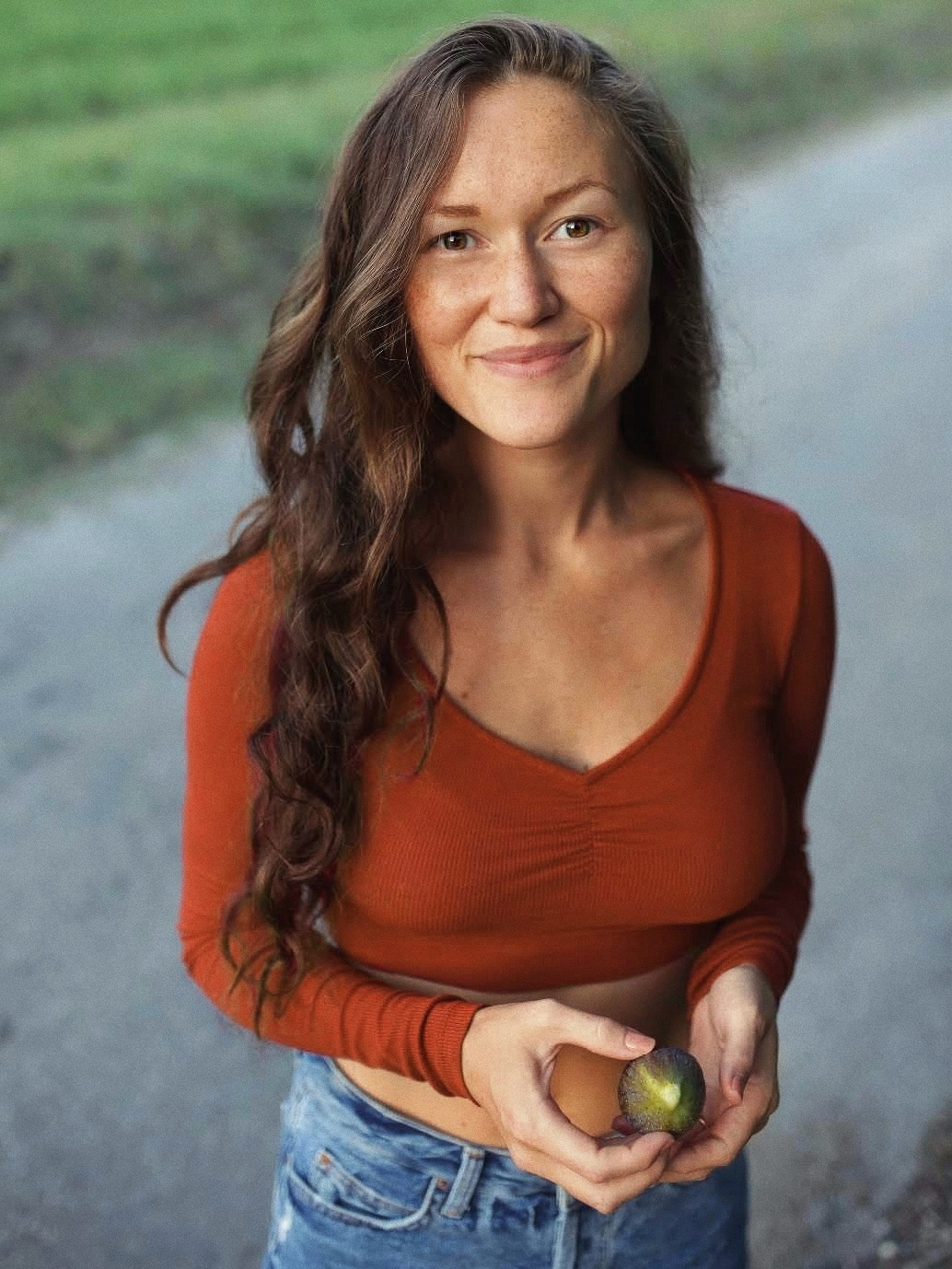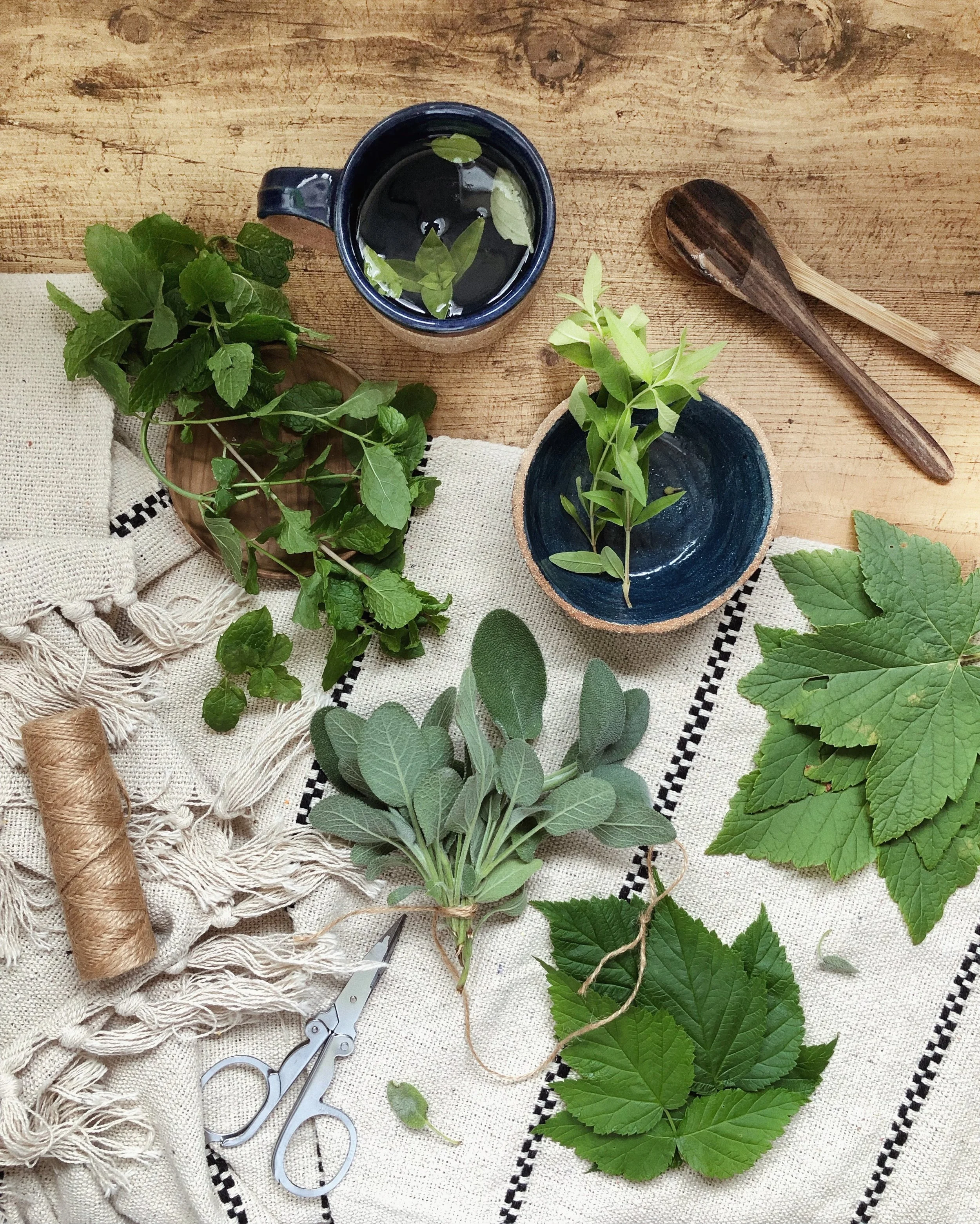Plastic-Free Tea: 4 Ways To Make Your Own Tea At Home
At most times of the day, I have a tea brewing, cooling or digesting. In the past, I’d mostly use tea bags; however, after recently discovering that many teabags aren’t actually compostable and can contain plastic, I decided to change my stance on my all-time favourite drink, by learning how to grow and brew my own herbal tea. It turns out, it’s really easy to do this and, as someone who doesn’t really drink black tea with caffeine, I love the idea of making and trying new flavours of tea - especially those grown in our small, urban container garden. We use herbs and berry leaves for our tea - maybe next summer we’ll experiment with fruits too!
Below are four recipes for making home-grown, home-made tea using a combination of berry leaves and easy to find herbs. These can all be grown in pots, even small pots on a balcony or a space that gets at least 5-7 hours of light a day. You could even grow the herbs indoors if you want, to have a fresh supply on the go. To learn a bit more about growing herbs in the garden click here.
If you don’t want to have to look after plants, or have the space, you can also pick leaves from friends’ gardens, or even pick some up while out for a walk in a park. Many parks have small herb gardens and, if you know what to look for, it can be quite straightforward finding leaves for herbal drinks. Just make sure to always wash your leaves thoroughly, to wash off bugs, and ideally aim for organically-grown produce.
Note: Some of the below might not be suitable for pregnant or breastfeeding women - please always research/consult a professional before trying anything.
Sage & Lemon Tea
Best brewed: fresh
Sage grows really easily in our garden. We’ve potted it with the rest of the herbs in a bright corner of the garden. We’ve given it almost no care, and it thrives. Sage is a great plant for a smaller space and for someone who doesn’t want to spend time looking after the plant. We don’t even give it attention when watering - it’s a hardy plant!
While we do have a lemon plant in the garden, I don’t think we’ll be getting lemons any time soon - so, to make this tea perfect, pick up a lemon from your local store and combine it with the sage to make a delightfully fresh hot drink, suitable for any time of the day.
Directions:
Pick one large spoonful of sage leaves. If the leaves are too big, tear them up.
Remove any stalks or hard pieces.
Add leaves to the teapot - contained in a strainer.
Add the juice of half a lemon.
Add 1 teaspoon of grated lemon zest.
Pour in boiling water and let it brew for 10-20 minutes (you can start drinking when it’s an okay temperature!).
Optional: You can use pineapple sage to give it a pineapple flavour instead, which is my favourite!
Raspberry Leaf Tea
Best brewed: dried
Raspberry leaf tea is one of my favourites: high in antioxidants, the leaves also provide B vitamins, vitamin C and a number of minerals, including potassium, magnesium, zinc, phosphorus and iron. It is very similar to black tea, but without the caffeine. This recipe uses dried leaves - you can dry them by hanging them in a dry space or by using a dehydrator (which is the quicker option!).
If you are pregnant please research using raspberry leaf tea before making and drinking your own.
Directions:
After drying the leaves, crush or crumble them into a container to store.
Use one tablespoon or dried red raspberry leaves to one cup.
Add to the teapot - contained in a strainer.
Pour in boiling water and let it brew for 15-20 minutes.
Optional: Add coconut milk for extra flavour.
Lemon Verbena & Mint Tea
Best brewed: fresh
Our neighbour told me about this one. He said he spent a lot of time in Israel when he was younger, and the family he stayed with would make Lemon Verbena and Mint tea quite often. Good for digestion and sleeping problems, lemon verbena & mint is a great combination. We’ve had lemon verbena for a few years, sent to us by the team at Mr Fothergill’s, and I’ve not been sure how to use it until now. We also have a huge surplus of mint in our garden; it can really take over it kept unchecked, so every week or so we pull up big bunches from the ground to prevent it from spreading. This tea recipe is a great alternative to throwing mint on the compost pile.
Directions:
Pick one handful/bunch of lemon verbena and mint.
Remove the stalks; make sure there are no woody bits.
Roll the leaves of each bunch into a cigar shape and finely chop the leaves.
Add to the teapot - contained in a strainer.
Pour in boiling water and let it brew for 5-10 minutes.
Blackcurrant Leaf Tea
Best brewed: fresh
Anyone who has had blackcurrants in their garden will know how fragrant the leaves are. Each time you brush past them or accidentally pick one I’m taken back to the aromatic berry flavour of Ribena that I had as a child! The flavour of the blackcurrant leaves is too good to not turn into a herbal tea!
There’s not a lot that has been scientifically proven with blackcurrant leaf tea; however, proponents of the plant claim that herbal blackcurrant leaf boosts the immune system, reduces joint or muscle pain and inflammation, eases coughs and colds, and much more. While this is yet to be confirmed, it is known that blackcurrant leaves are rich in vitamin C and also contain gamma-linolenic acid (GLA), which may improve the immune system.
As with a few of the other teas mentioned, blackcurrant leaf is great when made fresh.
Directions:
Pick 6-8 leaves from your blackcurrant bush.
Remove the stalks and hard pieces. Wash thoroughly.
Roll the leaves of each bunch into a cigar shape and finely chop the leaves.
Add to the tea pot - contained in a strainer.
Pour in boiling water and let it brew for 15-20 minutes or longer.
The flavour is subtle, so it’s usually best to brew for a longer time.
Although the leaves are safe when used in reasonable quantities, women who are pregnant or breastfeeding should talk to their doctor before using the plant medicinally.
Drying herbs in the nursery cupboard - a cool and dry space!
Let me know if you try any of these teas!
Thanks for reading.
















